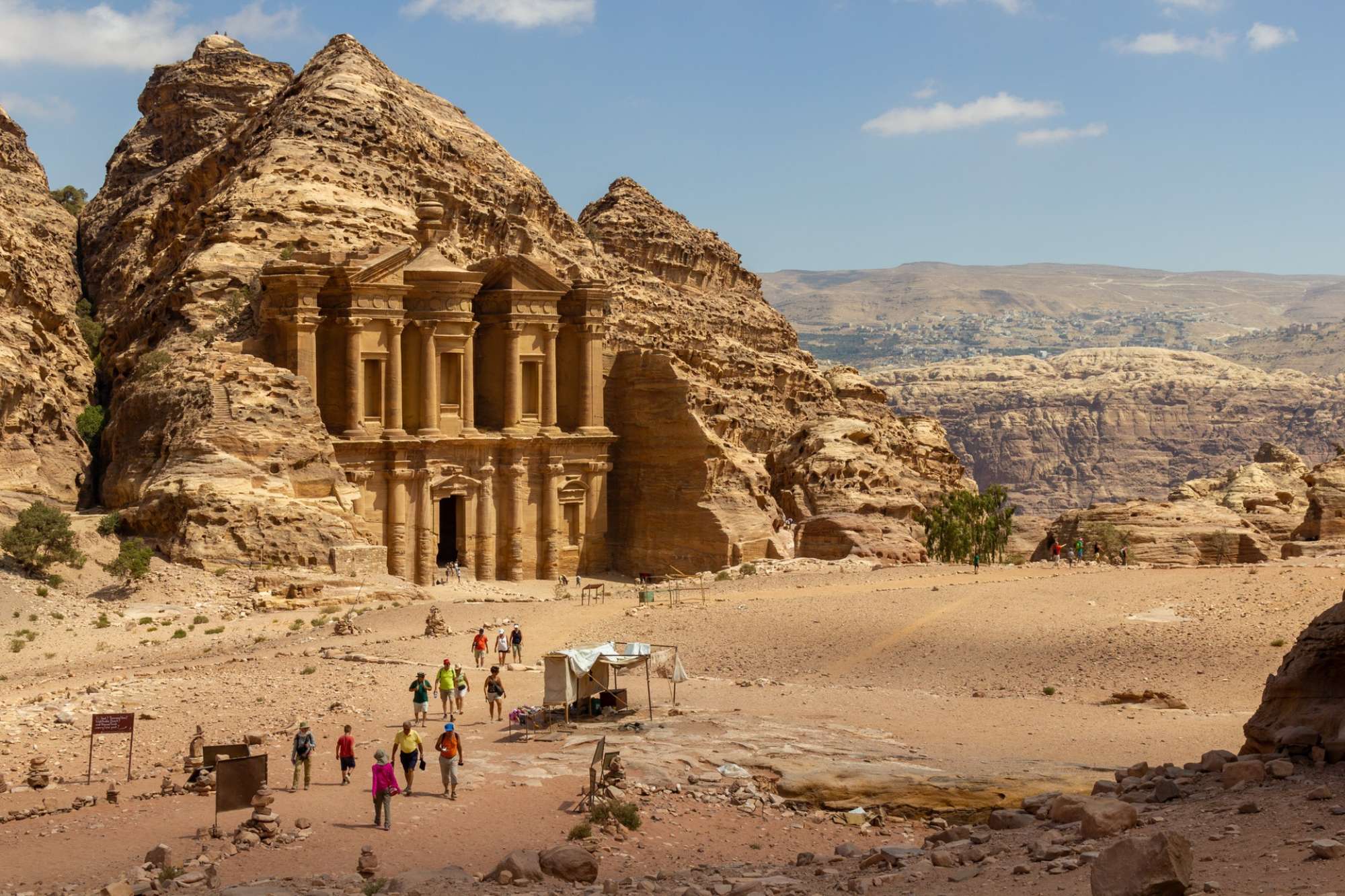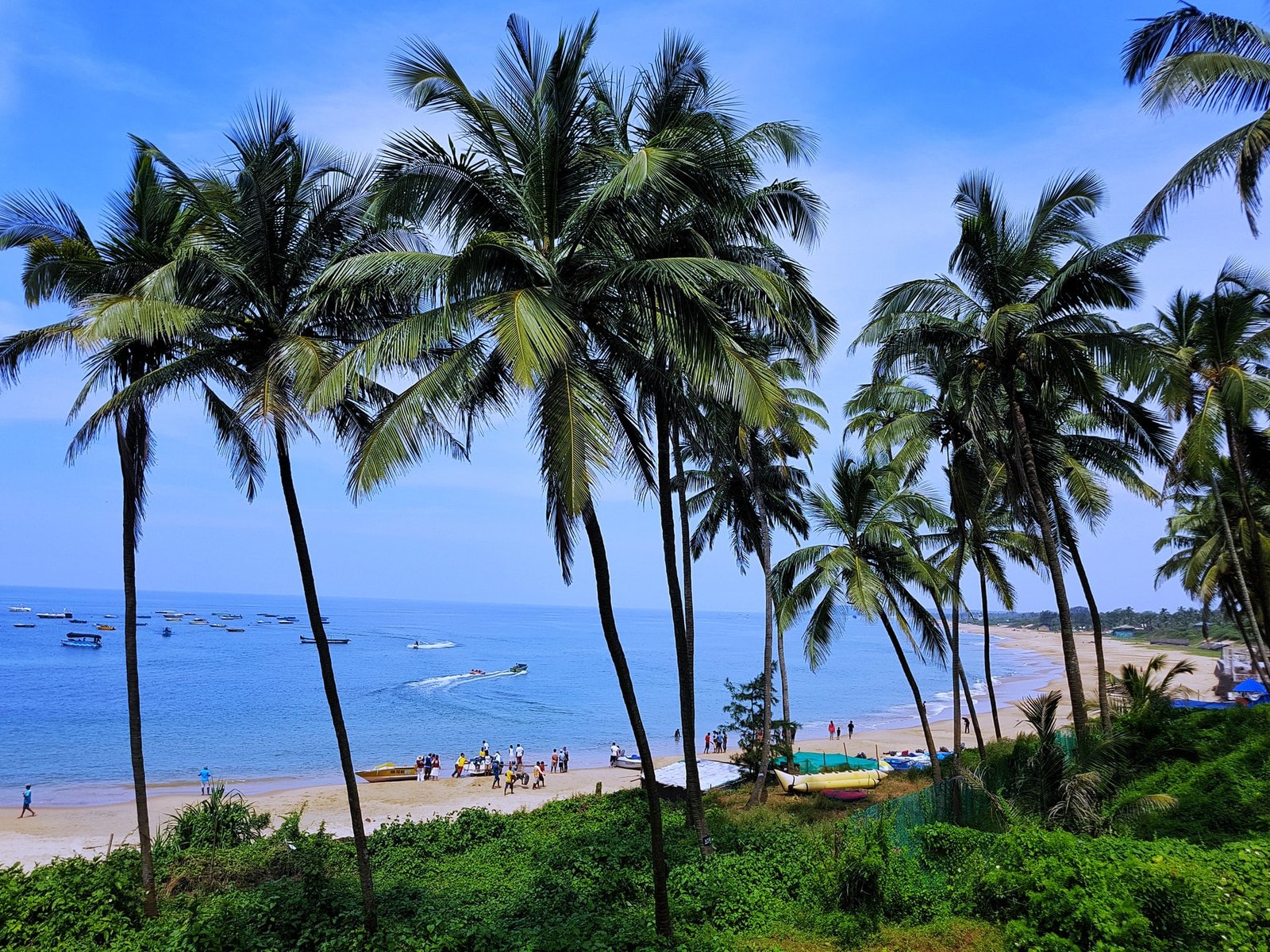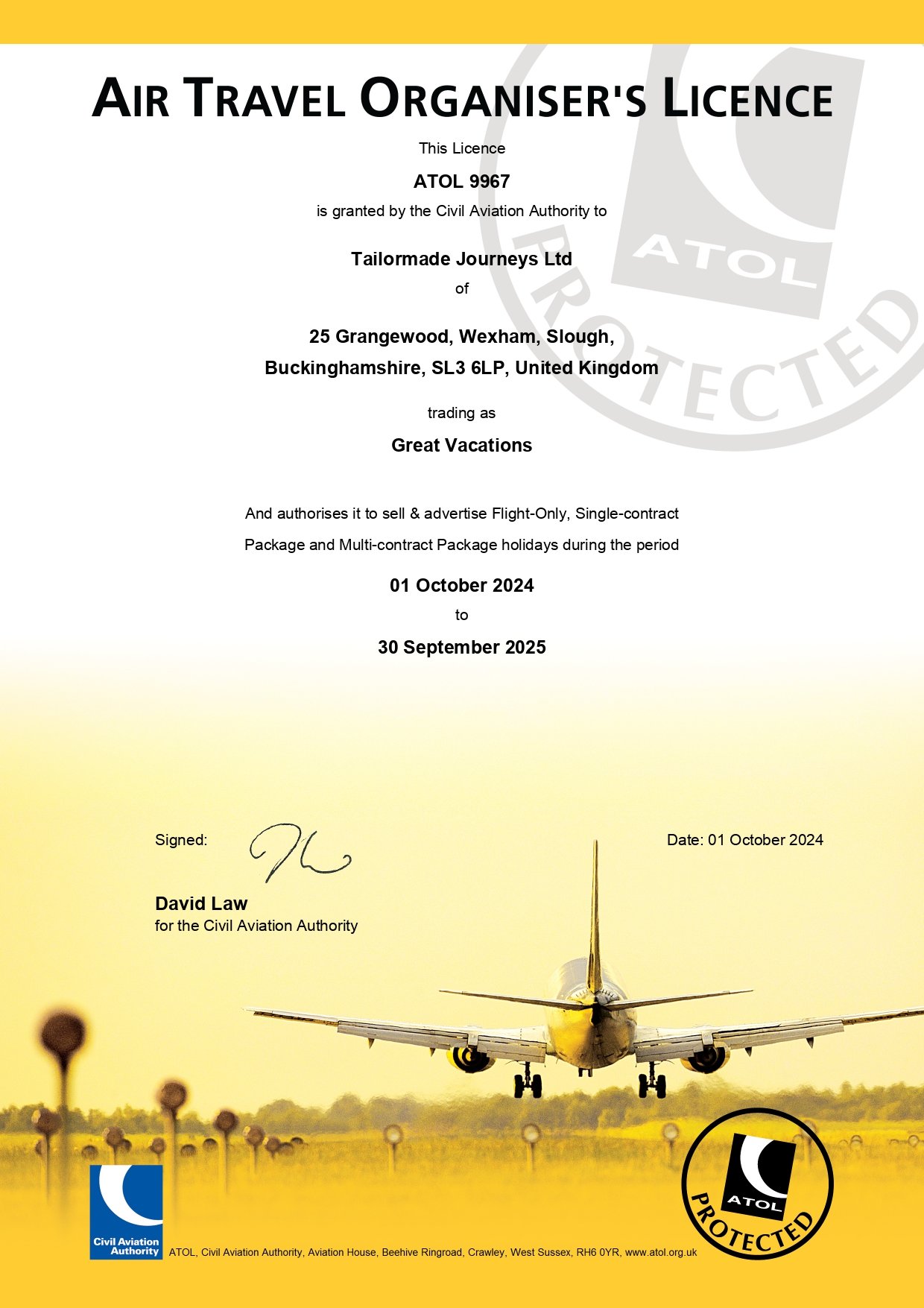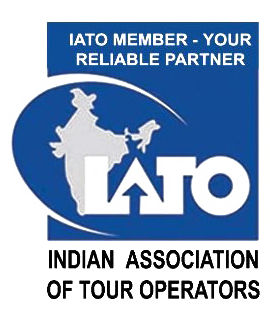Standing at the crossroads between North Africa and Eurasia, Jordan is a land steeped in history. It was in Jordan that Moses looked out over the Promised Land, and it was here that Jesus is widely believed to have been baptized.
The country is home to surprisingly well-preserved Roman cities andfortified Crusader castles. It is also a place of stark natural beauty,from the lunar landscape of Wadi Rum to the salt-laden waters of the Dead Sea and the beautiful corals off the coast of Aquaba. The biggest draw though is the rose-red city of Petra, hewn from towering rock walls and hidden from the rest of the world until its discovery in 1812.
Tourist Information
Key Facts
Capital: Amman
Area: 92,300 sq km
Population: 5.7 million
Languages: Arabic (official), English used widely in business
Time: GMT + 2/3 hours
Currency: Dinar
Religions: Sunni Muslim (92%), Shia Muslim (4%) Christian (4%)
Visa Formalities: Visa required. British nationals can obtain this on arrival
Electricity: 230V AC,50hz cycle
Climate
The climate in Jordan is semi-dry in summer with average temperature in the mid 30°C (mid 90°F) and relatively cold in winter averaging around 13 °C (55 °F). The western part of the country receives greater precipitation during the winter season from November to March and snowfall in Amman (756 m (2,480 ft) ~ 1,280 m (4,199 ft) above sea-level) and Western Heights of 500 m (1,640 ft). Excluding the rift valley the rest of the country is entirely above 300 m (984 ft)(SL).
The major characteristic of the climate is humid from November to March and semi dry weather for the rest of the year. With hot, dry summers and cool winters during which practically all of the precipitation occurs, the country has a Mediterranean-style climate. In general, the farther inland from the Mediterranean Sea a given part of the country lies, the greater are the seasonal contrasts in temperature and the less rainfall. Atmospheric pressures during the summer months are relatively uniform, whereas the winter months bring a succession of marked low pressure areas and accompanying cold fronts. These cyclonic disturbances generally move eastward from over the Mediterranean Sea several times a month and result in sporadic precipitation.
Most of the land receives less than 620 mm (24.4 in) of rain a year and may be classified as a semi dry region. Where the ground rises to form the highlands east of the Jordan Valley, precipitation increases to around 300 mm (11.8 in) in the south and 500 mm (19.7 in) or more in the north. The Jordan Valley, forms a narrow climatic zone that annually receives up to 900 mm (35.4 in) of rain in the northern reaches; rain dwindles to less than 120 mm (4.7 in) at the head of the Dead Sea.
The country’s long summer reaches a peak during August. January is usually the coldest month. The fairly wide ranges of temperature during a twenty-four-hour period are greatest during the summer months and have a tendency to increase with higher elevation. Daytime temperatures during the summer months frequently exceed 29 °C (84.2 °F) and average about 32 °C (89.6 °F). In contrast, the winter months—September to March—bring moderately cool and sometimes very cold weather, averaging about 3.2 °C (37.8 °F). Except in the rift depression, frost is fairly common during the winter, it may take the form of snow at the higher elevations of the north western highlands. Usually it snows a couple of times in the winter.
For a month or so before and after the summer dry season, hot, dry air from the desert, drawn by low pressure, produces strong winds from the south or southeast that sometimes reach gale force. Known in the Middle East by various names, including the khamsin, this dry, sirocco-style wind is usually accompanied by great dust clouds. Its onset is heralded by a hazy sky, a falling barometer, and a drop in relative humidity to about 10 percent. Within a few hours there may be a 10 °C (18.0 °F) to 15 °C (27.0 °F) rise in temperature. These windstorms ordinarily last a day or so, cause much discomfort, and destroy crops by desiccating them.
The shamal, comes from the north or northwest, generally at intervals between June and September. Remarkably steady during daytime hours but becoming a breeze at night, the shammal may blow for as long as nine days out of ten and then repeat the process. It originates as a dry continental mass of polar air that is warmed as it passes over the Eurasian landmass. The dryness allows intense heating of the Earth’s surface by the sun, resulting in high daytime temperatures that moderate after sunset.
VISA Information
HASHEMITE KINGDOM OF JORDON
6 Upper Phillimore Gardens,
LONDON – W8 7HB,
Tel : 087 0005 6952
Fax : 020 937 8795
Visa Section : 087 005 6952
VISA REQUIREMENTS
All visitors to Jordon require visa as follows:
One application form per passport completed and signed by the applicant
One passport – sized photograph, affixed to the above completed application form, the photograph MUST be similar in appearance to the photograph in the passport.
Visa fee £ 41.00 GBP cash / cheque payable to Gulfvisa.
Note: The above is only for information purpose. Visa requirement might be changed by the concerned embassy, hence kindly visit the embassy website or speak to the concerned authority before applying for the visa.
Local Laws & Customs
Local laws reflect the fact that Jordan is an Islamic country. You should respect local traditions, customs, laws and religions at all times and be aware of your actions to ensure that they do not offend other cultures or religious beliefs, especially during the holy month of Ramadan or if you intend to visit religious areas.
The government does not interfere with the practice of Christianity but encouraging conversion to the Christian faith is illegal. It is also considered illegal for a Muslim to convert to Christianity.
Jordan is a conservative society. You are reminded to dress modestly and behave courteously.
Possession, use or trafficking in illegal drugs is a serious offence and can result in lengthy prison sentences and heavy fines.
Whilst Jordanian law may not explicitly outlaw homosexual acts, Jordan is a conservative society and public displays of affection between homosexual couples are not generally tolerated; they could result in arrest and prison sentences imposed under Jordanian law.
Women are advised to take extra caution when travelling alone as there have been isolated incidents of harassment.
Values & Tradition
Jordan can be regarded as a typically Arab country as its people are very warm, friendly and hospitable. Jordanians are typically happy to forgive foreigners who innocently ‘break the rules’ of etiquette. However, visitors seen to be making an effort to observe local customs will undoubtedly win favour.
Joining local people for a cup of tea or coffee can be a wonderful way to learn more about local culture. If you are invited yet are unable to attend, then it is perfectly acceptable to decline. Place your right hand over your heart and politely make your excuses.
Many families, particularly in rural areas, are very traditional and, if you visit their house, you may well find it is divided between the men and women. Foreign women are often treated as honorary ‘men’.
Local women in Jordan enjoy considerable freedom when compared with many other countries in the region. Women are entitled to a full education, they can vote, they can drive cars, and they often play significant roles in business and politics. Arranged marriages and dowries are still common.
Getting Around
Amman and other cities are relatively small, and most places of interest, hotels and restaurants are well known. Street addresses are rarely used (mail is delivered only to post office boxes located at neighbourhood post office centres) and only the larger street names are well known. When giving directions, therefore, people will usually tell you the area or a nearby landmark (a large hotel, ministry building or supermarket, for example) and instructions from there. This works more efficiently than it sounds.
Amman itself is built on seven hills, or jabals, each of which more or less defines a neighbourhood. Many jabals once had a traffic circle (roundabout) at their peak, and although most of the circles have now been replaced by traffic lights, the junctions are still known as 1st Circle, 2nd Circle… 8th Circle. Other Amman neighbourhoods were once separate villages, now swallowed up by the expanding city.
One final word… if you’re having trouble finding your way, don’t hesitate to ask a passer-by, most people will be delighted to help.
Health Requirements and Recommendations
Inoculations are not required unless you are travelling from an infected location. If you come from a country where diseases such as cholera and yellow fever are prevalent, you will have to show a certificate of inoculation at your point of entry into Jordan. Although not required, it is preferable to have preventative shots against polio, tetanus and typhoid.
Jordan is one of the cleanest and safest countries, but it is nonetheless advisable to take some precautions until your digestive system adjusts. Hotels rated four-star and up have their own filtering systems, and their tap water is safe to drink. In other places, bottled water is recommended. All fruit and vegetables should be washed thoroughly, and salads and cold meats which have been sitting out for a long time should be avoided, especially during summer months. All Jordanian dairy products are pasteurised and safe.
Medical services are well developed throughout Jordan, with a medical centre or clinic in every town and village. There are hospitals in Amman, Aqaba, Ma’an, Karak, Madaba, Zarqa, Irbid and Ramtha. In the larger towns and cities many of the doctors have been trained overseas and speak English. Antibiotics and other drugs normally sold on prescription in the West are often available over-the-counter in Jordan. You should carry prescriptions of any medicaments you may need, making sure you have the generic name as your specific brand may not be available. If you wear glasses, bring a spare pair and a copy of the prescription as well.
Electricity
Jordan uses 220V 50 Hz. But several types of plugs/outlets are used. I.e. German plugs with round pins, UK plugs, and combination plugs that can take both european plugs with round pins and US plugs with flat pins (but still 220 Volt)
Getting Around in Jordan
Taxis are available from Queen Alia International Airport to take you into Amman. The trip takes around 30 minutes, depending on traffic, and will cost you around 10 JD. The airport also has a bus service which arrives at Abdali bus station every hour and costs 0.500 JD. Passengers using Queen Alia airport for international flights are requested to check in two hours before departure.
Transportation
Taxi Services
Regular yellow private taxis are a fast and relatively inexpensive way of getting around Amman, Aqaba and other cities. They are found in abundance in most areas, and you will rarely have to wait long to get one. Taxi drivers are obliged to use their meter, which starts at 0.150 JD.
A cheaper option to a private taxi is known as a servees, or a communal taxi. These are usually white Mercedes or Peugeot 504s which take preordained routes around Amman. Servees taxis will stop to let you out anywhere along their route, although there are registered points where they begin and end their circuit. Like buses, servees taxis post their destinations and route numbers in Arabic, so you may find it difficult to familiarize yourself with their routes. If you cannot read Arabic, hail a passing servees, shout your destination, and it may stop to pick you up. Most servees routes pass through either downtown Amman or Abdali bus station. Servees fares run between 80 and 120 fils.
Buses
There are several types of bus service operating in Jordan. The enormous blue-and-white buses belonging to the JETT bus company run on limited routes within the country and run charter tours. JETT connects Amman to Aqaba, the King Hussein Bridge, Petra, and Hammamat Ma’een. You should book in advance for JETT buses. The JETT station is located on King Hussein Street about 500 meters from the Abdali bus station.
Large private buses, usually air-conditioned, run north from Amman to Irbid and south to Aqaba. There are two main bus stations in Amman: Abdali and Wahdat. Buses from Abdali go to Ajloun, Beqa’a, Deir Alla, Fuheis, Jerash, Irbid, Sweileh, Wadi Seer and the King Hussein Bridge. Most of these fares cost less than half a dinar. Buses from Wahdat station go south of Amman to Aqaba, Madaba, Petra, Ma’an, Wadi Mousa, Karak and Hammamat Ma’een. Fares for these routes are usually below 2 JD. Destinations are shown on the front of public buses in Arabic, so if you do not read Arabic ask to be shown the bus you need.
All smaller towns are connected by 20-seat minibuses. These leave when full and on some routes operate infrequently. The Dead Sea is one destination that is difficult to get to without private transport, as there are no JETT or public buses operating there.
Car Rental
Car rental in Jordan is fairly expensive in comparison to Europe and the United States, but there are plenty of choices available in Amman, Aqaba and at Queen Alia airport. All the main international car rental companies operate in Amman, and some have offices in other cities. Rental cars have green number plates with yellow writing, whereas Jordanian private cars have white number plates.
When you are calling to compare prices, be sure to check the amount of deposit required, as it can be very high. Obtain good insurance and read the contract thoroughly. Prices should range between 30-40 JDs per day for a medium-sized car. Mileage limits vary from 100-200 kilometers per day, after which you pay extra.
You can also hire a car plus driver from most rental companies. Car rental can also be arranged through travel agents and hotels.
Driving
Driving in Jordan presents few problems. While an international driving license is preferred, generally a national driving license is sufficient as long as it has a photograph of the holder. Foreigners who plan to live in Jordan must obtain a Jordanian driving license, but this is not necessary for tourists. Local vehicle insurance is also required.
Jordanians drive on the right-hand side of the road. Road signs are in Arabic and often English as well, so this should pose no problem. Jordan has an excellent road system, and can be crossed by car in approximately four hours. Be careful while driving in cities, as roundabouts are common and potentially dangerous. If you choose to drive in the desert, be sure to take a four-wheel drive with the appropriate tires and an extra container of gasoline. It is wise to bring extra water, as well.
There are numerous gasoline (petrol) stations in Amman and in major towns, but take care if you are driving to southern Jordan, as they are more sparsely spaced there. Gasoline or petrol is called benzene, and super is called khas.










